Otodus
obliquus aff. Otodus subserratus
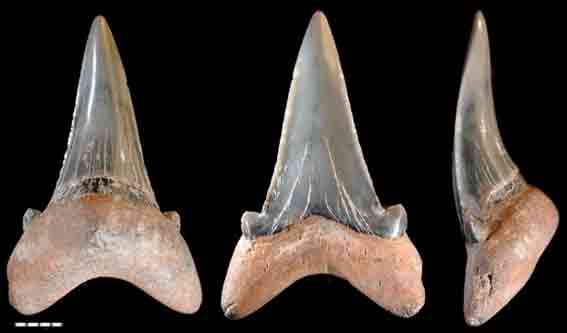
This image
represents a typical Otodus tooth, and is figured here for comparison
with the serrated examples.
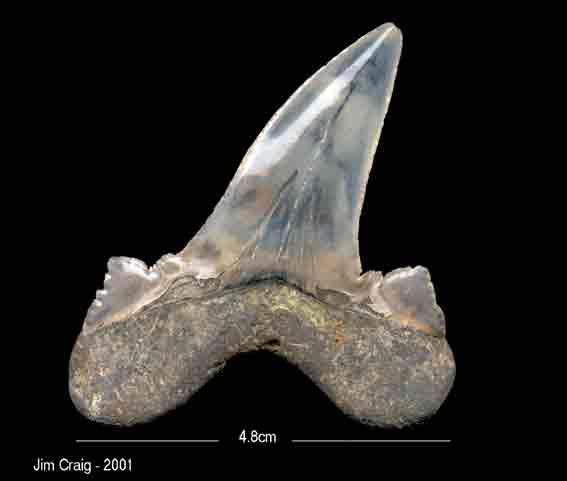

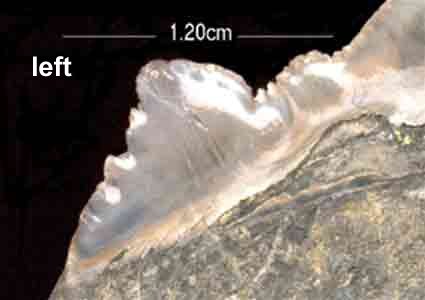
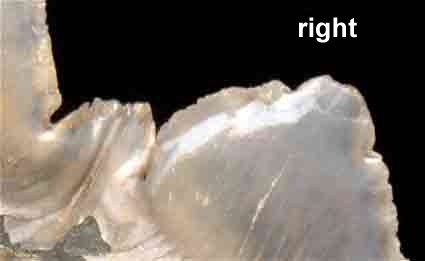
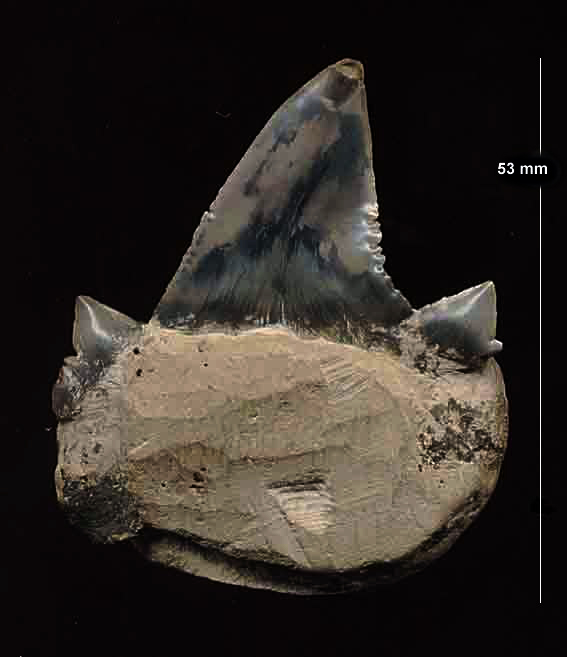
Details
showing the serrations clearly
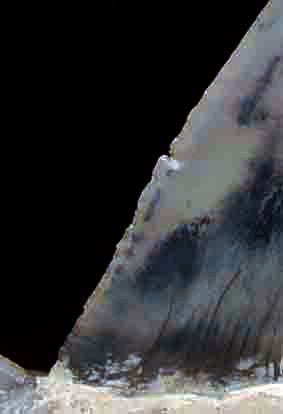
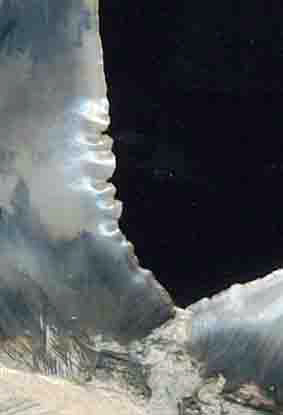
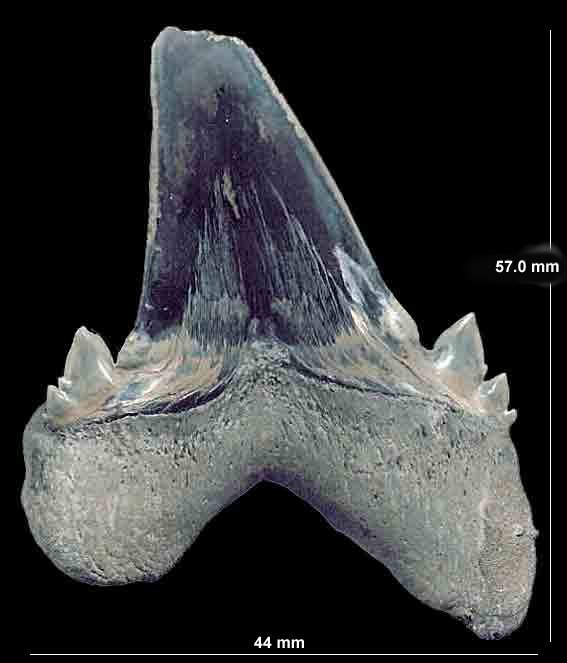
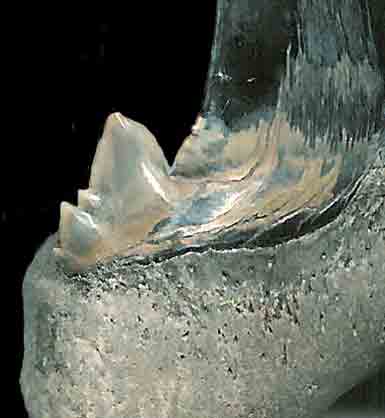
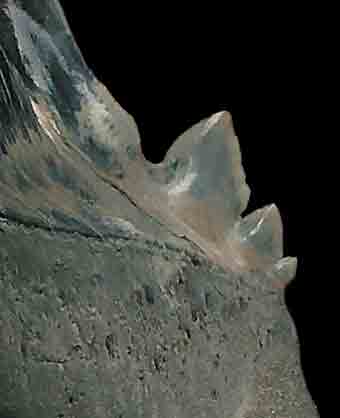
|
Otodus
obliquus aff. Otodus subserratus
|
||
| Otodus obliquus teeth are found quite often on Sheppey, however teeth with serrations are extremely rare. In the words of a good friend of mine, "as rare as hens teeth". There is some debate as to whether these serrations are due to the shark being of extreme age, or that of an evolutionary development towards later forms is taking place. I hope that someone can put me right on this issue. The examples that I am able to exhibit on this page were found almost at opposite ends of the section. One was found at Paddies Point at the far westerly end, which is the youngest part of the section, where division D of the London clay moves into division E. The other was found at Warden Point, towards the easterly end of the section, much earlier in division D. The tooth could have come from the top of the cliff which would place it nearer in time to the Paddies Point specimen, but there could be as much as 3 million years between them | ||
 |
||
|
This image
represents a typical Otodus tooth, and is figured here for comparison
with the serrated examples.
|
||
 |
 |
|
| This tooth was found by Don Pople of the Medway Mineral and Lapidary Society at Warden Point while scanning the deposits on the beach for Shark's teeth. It is a unique specimen, and is wonderfully preserved. Note the serrations on the lateral cusps. | ||
 |
 |
|
 |
||
|
Details
showing the serrations clearly
|
||
 |
 |
|
| This specimen was found near to Paddies point and may be slightly pathalogical, but the serrations are clearly evident either side of the blade. Collection of Jim Craig | ||
 |
||
 |
 |
|
| An unusual Otodus tooth found by Frederic Migom in slumped clay at Hensbrook while on a field trip with me on Saturday 2nd. of June. The tooth is not serrated but displays some characteristics similar to the teeth above. Probably derived from a very old shark, the multiple side cusps are very distinctive | ||